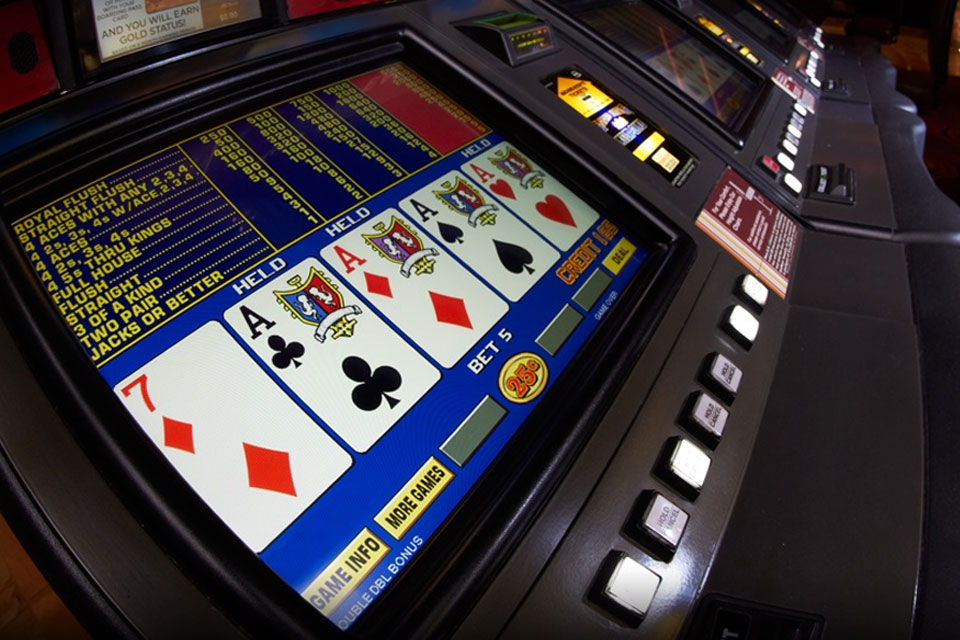Video Poker Strategy | In the realm of Jacks or Better, a classic casino game, players often find themselves perplexed by a specific hand configuration involving a combination of suited high cards and a 10 card, accompanied by an additional unsuited high card. Deciphering the optimal move in such scenarios can be a daunting task. Let’s delve into a strategic breakdown of this perplexing situation and unlock the key to maximizing your winnings.

The Dilemma Unveiled
Consider the following hand: Jh 3d Qs 10h 6c
This hand presents a conundrum that necessitates careful consideration. The question is: How should you play this hand to optimize your potential return?
Two potential decisions lie before you:
- Hold the Suited J-10 of Hearts and Discard the Unsuited Q
- Hold the Unsuited J-Q and Discard the 10
The choice that yields the highest expected value (EV) is the one you should gravitate towards. EV represents the anticipated number of coins you stand to win based on an infinite number of trials with a five-coin wager.
Calculating the Optimal Play
Utilizing the advanced capabilities of the “Analyze Hand” feature within the Video Poker for Winners software, we can meticulously dissect the conceivable outcomes and rank them from most to least valuable. This systematic approach equips us with the insights needed to make informed decisions.
Our analysis unveils a nuanced landscape. The EVs for the two competing holdings are closely matched, with the unsuited J-Q yielding a slightly higher EV of 2.49, as opposed to the 2.48 (rounded) EV of the suited J-10. While the difference might seem marginal, holding the unsuited J-Q grants you an incremental advantage of nearly 0.01 coins per hand.
Unveiling the Outcome – Video Poker Strategy

Upon closer examination of the data, it’s apparent that the unsuited J-Q triumphs over the suited J-10 due to the prevalence of high pairs in the former’s case. Holding the unsuited J-Q results in a greater frequency of high pairs, compensating for the reduced likelihood of straights and eliminating the potential for flushes, straight flushes, or royal flushes. This phenomenon cements the unsuited J-Q’s superior EV over the suited J-10.
| Hold | EV | Total | No Win | High Pair | Two Pair | 3K | ST | FL | FH | 4K | SF | RF |
|---|---|---|---|---|---|---|---|---|---|---|---|---|
| J-Q Unsuited | 2.49 | 16,215 | 10,037 | 5,022 | 711 | 281 | 144 | 0 | 18 | 2 | 0 | 0 |
| J-10 Suited | 2.4841 | 16,215 | 11,987 | 2,847 | 711 | 281 | 204 | 161 | 18 | 2 | 2 | 1 |
<RNG (Random Number Generator) How to Make an Impact?>
Unmasking Distinctive Values
It’s imperative to recognize that not all suited high cards in tandem with a 10 card hold the same intrinsic value. A hierarchy of value emerges:
- Suited J-10 reigns supreme, boasting more value than a suited Q-10.
- Suited Q-10 follows suit, eclipsing the value of a suited K-10.
- The coveted title of the lowest value belongs to the suited A-10, which even falls short of holding the ace alone. This insight underscores the futility of clutching onto a suited A-10.
Navigating the Ace-Ten Conundrum

A perplexing riddle often befuddles players: Why is it sometimes recommended to retain suited J-10, Q-10, and K-10, while shunning the suited A-10? The answer lies in the potential for crafting potent hands.
The value disparity becomes evident upon scrutiny. Suited J-10 and Q-10 unveil a panorama of possibilities, including four potential straights and three conceivable straight flushes. The same can’t be said for the suited A-10, which lacks such versatility due to the restricted scope of potential straights (Ace-high only) and the absence of straight flushes.
A Strategy for the Ages – Video Poker Strategy
Introducing the “Adjacent Rule,” a groundbreaking strategy designed to demystify the optimal play for suited high card-10 combinations. This rule simplifies decision-making for suited J-10 and Q-10 scenarios, suggesting that you retain both unsuited high cards when the unsuited high card in question lies adjacent to the highest-value card in the high card-10 combination.
For instance, suppose your hand features a suited J-10 and an unsuited queen. In this scenario, clutch onto the unsuited J-Q, since the queen finds itself adjacent to the jack. Contrastingly, when the unsuited high card lacks adjacency to the highest-value card, the optimal play shifts to retaining the suited J-10.
A Strategy in Action – Video Poker Strategy

For illustrative purposes, let’s examine a few hands using the adjacent rule and the tailored rules for suited K-10 and A-10 scenarios:
- 6s 5h 10d Jd Qc: Keep the unsuited Jd and Qc.
- 10h Qh Ks 4h 6c: Hold the unsuited Qh and Ks.
- Ah 6d Jc 10h 5s: Retain the Ah and Jc.
- Js Kd 7s 3d 10s: Opt for the Js and 10s.
Fine-Tuning the Strategy
This strategic approach is tailored for Jacks or Better games featuring a six-times flush payout, such as 9/6 JOB and 8/6 JOB. For games with a five-times flush payout, like 9/5 JOB and 8/5 JOB, a slight exception emerges:
When confronted with the choice between an unsuited A-Q and a suited Q-10, prioritize the unsuited A-Q.
By embracing this refined strategy, you’ll transform your Jacks or Better experience, optimizing your odds and enhancing your gameplay to unprecedented heights.
<Video Poker – Why is it often said to be unfair? Is it true?>



